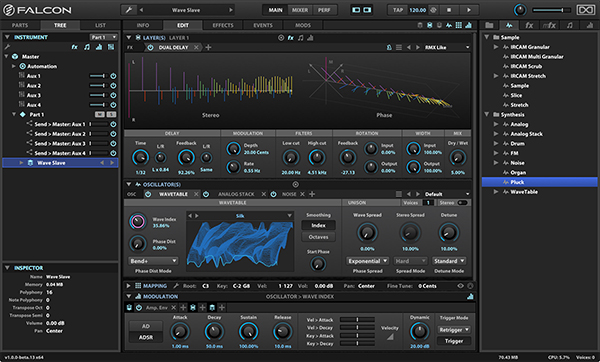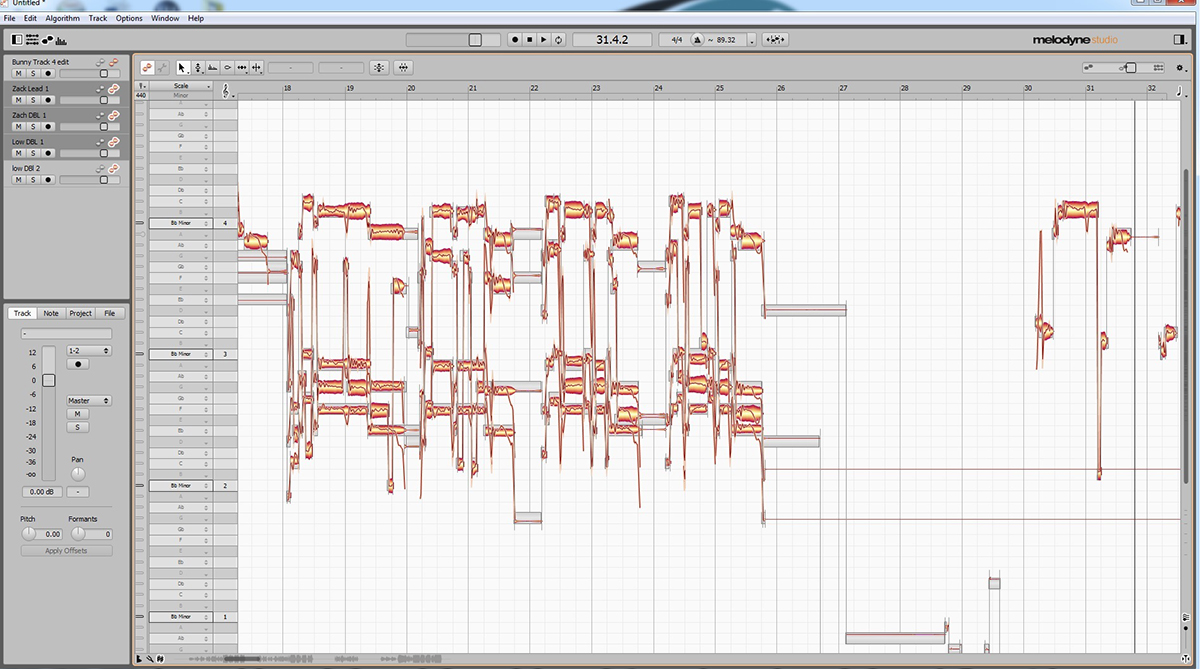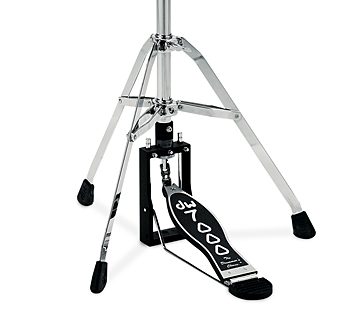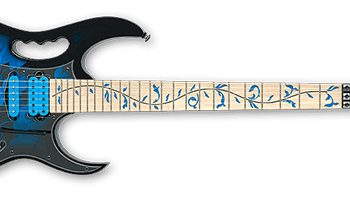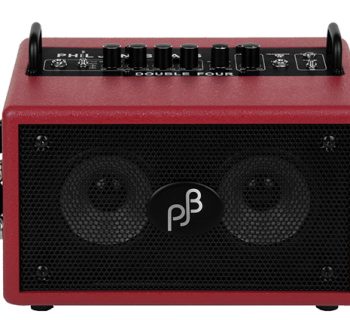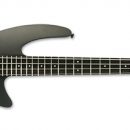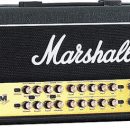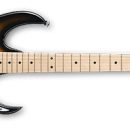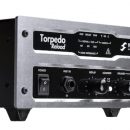UVI is an interesting company, somewhat quietly producing quite a large number of quality sounding plug-ins. What some of you may not know is that UVI was the programming force behind MOTU’s Mach Five plug-in. It appears that UVI has stopped writing code for Mach Five and instead created their own Falcon, a “Master Plugin,” much like NI’s Kontakt. Right now, some of you may begin to scratch your heads, thinking that Falcon is a powerful new soft-synth. Don’t worry—it is, but it’s much more, too.
Marketed as a hybrid instrument, Falcon brings oscillators, effects, modulators and event processors together in a workflow-adaptive and scriptable environment (which allows third parties to add content, like Kontakt libraries). Much like our recently reviewed Yamaha Montage synthesizer, there’s so much power and so many choices within Falcon that it may be a little dizzying at first. But there’s no denying that Falcon can sound great and allow you to be as creative as you like, assuming you are willing to roll up your sleeves and navigate the learning curve.
Features
There’s a lot to cover, but let’s start with the nuts and bolts:
Falcon offers fifteen(!) oscillators covering the spectrum of both sampling and synthesis techniques. Sample-based oscillators include IRCAM Granular, IRCAM Multi Granular, IRCAM Scrub, IRCAM Stretch, Sample, Slice and Stretch. Synthesis oscillators include Analog, Analog Stack, Drum, FM, Noise, Organ, Pluck and Wavetable. What’s remarkable is that you can layer any number of these in any combination, limited only by the power of your computer.
The virtual analog oscillator has a traditional selection of waveforms including Sine, Saw, Square, Triangle, Noise and Pulse. The Analog Stack is an eight-voice implementation of the Analog oscillator for rapid layering. Each voice utilizes the same basic engine found in the Analog oscillator, substituting the Unison and Sync sections for Pan and Gain.
Designed for the creation of rhythmic and percussive sounds, the Drum oscillator utilizes both a pitched oscillator and noise generator. A four-operator FM oscillator is also present which can be used in either ratio or Hz modes (sorry, no importing of DX-7 patches).
The Noise oscillator offers fifteen unique noise shapes including Band, S&H, Static I, Static II, Violet, Blue, White, Pink, Brown, Lorenz, Rossler, Crackle, Logistic, Dust and Velvet.
The Organ oscillator is a drawbar-style organ oscillator with eight bars representing different harmonics traditionally used on organs.
The Pluck oscillator utilizes both algorithmic and sample-based excitations to create rich harmonic sounds with natural decay, inspired by string synthesis.
The Wavetable oscillator provides multiple phase distortion modes and a unison section with wave and stereo spread across up to eight voices. Wavetables can be chosen from factory content and can also import a variety of user files including WAV files.
Get all that? That’s not even touching the Sample section yet! Of course there’s basic sampling functions, but Falcon goes beyond that, including a granular section that allows for pitch shifting and time stretching.
The effects section is quite extensive, too. Falcon includes over eighty effects, grouped so you can find them easily: Delays, Reverbs, Modulation, Filters, Equalizers, Amps and Stereo, Drive and Distortions, Dynamics, and Analysis.
Effects within Falcon can be used as sends on effect busses, at the program, layer or note level, and effects can be racked in an Effect Rack for parallel and multi-band processing, or as a central, reusable, multi-effect with macro-driven controls.
Falcon includes eight modulation generators including AHD, Analog ADSR, Attack Decay, DAHDSR, Drunk, LFO, Multi Envelope, and Step Envelope. Modulation generators can be used at any level in a patch allowing them to control an oscillator, effect or another modulator. A cool feature is that each modulation generator in Falcon can store presets, providing a quick way to save and reuse configurations that you find useful. Falcon ships with over one thousand preset wave shapes for the Multi Envelope generator to help get you started. We liked the aptly named Drunk, which generates a random signal that simulates the natural randomness of pitch and amplitude drift found in sustained notes.
To quote UVI, “Falcon's Event section provides control over pre-synthesis data, namely the manipulation, analysis or generation of MIDI. Event processors can do anything from arpeggiating incoming notes or strumming them like a guitar to applying micro tunings, playing back MIDI files or creating generative sequences.” This includes the arpeggiator, MIDI player, and microtuner to allow alternate tunings. Perhaps even more intriguing is the Script Processor, which as per UVI, allows:
- sequencing, arpegiation
- Legato, Portamento
- chord recognition, chord voicing, string selection
- harmonization
- Ensemble/unison simulation
- generative/algorithmic music
- micro-tuning
- effects: echo, tremolo, vibrato
- complete synthesis engine scripting and remote control
- transformations: mirror, scale constraints
- advanced instrument user interfaces with custom graphics
Essentially, you could write your own GUI for your own sampler if you choose to. An endeavor for sure, but pretty cool!
We will talk about the interface and operation shortly, but you will be happy to know that Falcon comes with a number of presets (after a separate download of Factory content) as well as a tutorial set to get you going. While you can make the argument that the presets are mostly good, we would have loved to find a chunk of the presets from UVI’s now-extensive library of sounds, perhaps a “Best of UVI” collection similar to Arturia’s Analog Factory soft-synth.
Falcon itself is a remarkably small 74MB download, and the factory content is a compressed 625MB download. It runs on both Mac and PC platforms, is 64-bit native, and supports most file formats including UVI Soundbanks (.ufs), AIFF, FLAC, MP3, MP4, REX1, REX2, SDII (on Mac), WAV, WAV64, SFZ, SND, and CAF (but not old Akai, Roland, or Emulator formats, some of which Mach 5 had supported). The software requires an iLok for authorization to run, and you get three authorizations. Currently, UVI is also including a $100 voucher to use towards purchasing additional UVI libraries to use within Falcon.
One other interesting point: you can use Falcon in multi-channel mode, including stereo, quad, 5.1, 6.1, 7.1, and even 10.2! For cinematic scoring, this could be very helpful to be able to do this right out of the box.
Though we originally started with Falcon version 1.0.6, during our review we upgraded to version 1.1.4. This version adds some welcome features, including another 100 presets, Thorus (an eight-voice chorus effect), two new effects called Fuzz4 and MaxMS (four-band distortion and mid-side maximizer), FM and Pluck oscillator enhancements, and expanded support for MPE devices such as the ROLI Seaboard and Linnstrument, with dedicated sounds for these instruments. Certainly, UVI is not resting on their laurels!
Usability
There’s no other way to say this: Falcon is very deep, and there is a learning curve to make the most out of it. We were a little daunted at first, but as we used it and things became more familiar, we got the hang of things. It’s definitely not an instantly gratifying interface like putting your hands on an analog poly-synth (even the virtual ones), but then the depth of this product is outstanding.
When you launch Falcon, you’ll see three tabs on the left side: “Parts,” “Tree,” and “List.” Parts show you what sounds (parts!) comprise the preset (essentially a multi-sound, or combination, as you may be familiar with in other synth verbiage). Tree allows you to see the structure of the part, so you can see information about the part such as effects and layers. List shows other info such as memory use, MIDI, polyphony, and tuning. Clicking on the gray triangle next to a label expands or collapses the info you are looking at. It looks like this:

For a quick primer on UVI’s nomenclature: a program is a collection of keygroups; a keygroup is the span of notes that a sample occupies. For example, a single sample could be assigned to a single note, or multi-sampled every few notes, and then each sample would be “stretched” across the remaining nearby non-sampled notes to create a continuous range of notes. Multiple keygroups would then be used to create the length of notes needed (i.e., for a 61-key keyboard). The collection of keygroups is then called a program, and a Part contains a program with one or more layers/keygroups. A grouping of parts is called a Multi, similar to a combi in Korg’s terms. You may have up to sixteen parts in a multi, each with their own MIDI channel if you wish. Of note, each keygroup, layer, program, part or multi, can have effects, modulation and events applied to it, adding a vast amount of control and sound-shaping possibilities.
Moving to the right side, we see the preset browser, which has multiple tabs:

The first of these is where any UVI libraries (with the .UFS extension) will appear (we had to point Falcon to our Soundbanks location in Preferences first). UVI Soundbanks show up with the logo of the collection. You can also view content under this tab by Devices (attached drives) and Places (locations within your computer). The next tab shows Falcon’s oscillators, which are the 15 mentioned earlier. Some of these have their origins in Mach Five, but are clearly expanded upon. If you were starting from scratch, you could choose a sample, add effects or start combining and layering to your heart’s (and computer’s CPU) content. There’s a lot of possibilities!
The next two tabs contain the effects, separated into two sections: Effects and Multi-Effects, the latter being groups of effects that can be recalled with a single click. Effects are organized by type, with presets following underneath. You can also create your own effects settings and then save them. Included are UVI’s outstanding Sparkverb as well as IR convolution reverbs, delays, choruses, flangers, phasers, filters, EQs, amps, drives, distortion, dynamics, analysis tools and “legacy FX” from previous versions of Mach Five and the UVI Workstation. Don’t let “legacy” labeling fool you—these effects are good, too (we loved the Disto Wah, for example)! To use an effect, drag it from the right to the left to insert it into your sound chain.
The next tab is for Event Processing. Here you’ll find a good number number of arppeggiator presets, as well as a MIDI file player. There’s also a micro tuner with numerous presets for things like Byzantine, Hawaiian, and Gnawa-pelog, and a several others. You can also access the Script Processor tools here, along with several presets for you to build into your creation. If you are into programming (of the computer variety), you go into the LUA-based scripting Falcon to create instrument actions and even interfaces.
Every function can be mapped via MIDI to your controller of choice. The MIDI Learn function requires you to right click on the parameter you want to control and then wiggle your knob or slider on the controller for Falcon to pick up the relevant CC number. This is similar to other MIDI learn functions in other software and was very straightforward to use.
The last tab in the Preset Browser pane is where you will find all of the modulators, with numerous presets to get you started.
So… saving the best for last, that leaves the middle of the screen, which is where the action really takes place. It is here that you get to play with knobs and settings and craft your sounds. The three tabs for this section are MAIN, MIXER and PERF. MAIN is the area where you can see all the layers that make up your sound or instrument. Five tabs allow you to switch between information, editing, effects, events and modulations. For the more complex constructions, elements can be hidden and then recalled. This is very useful as you build more congested and intricate programs. It looks like this:
 The MIXER section is a mixer where you can apply bus effects and set levels, pans and more. Given the breadth of sounds Falcon can generate, the mixer can be quite useful, particularly if you’re using Falcon as a multi-instrumental tool.
The MIXER section is a mixer where you can apply bus effects and set levels, pans and more. Given the breadth of sounds Falcon can generate, the mixer can be quite useful, particularly if you’re using Falcon as a multi-instrumental tool.
Finally, the PERF section allows you to tweak performance settings, such as volume, pan, keyboard and velocity range, as well as setting up key-switching triggers for program changes. This helps Falcon to be used as a live sound generator on stage—setting up Multis for each song, for example. In a sense, Falcon can be configured similar to use of Abelton Live or Apple Mainstage as your set list dictates.
Ultimately, there’s so much you can do, it’s sometimes hard to find the right place to start. This is not a beginner’s soft-synth product. But in the right hands, Falcon is as deep as anything you may desire.
Sound
When Falcon landed in our studio, we really didn’t know what to expect. But we will say this: it sounds excellent. And we applaud the updated version’s redesigned sound banks. The animated and arpeggiated presets are quite inspiring, and many are very gritty sounding with an edge. Leads, pads, and bass are all well represented in the included presets, and some of the rhythmic presets inspired us to get us start recording! Synthy stuff is definitely the included presets’ strong suit, which isn’t a bad thing. However, given UVI’s large product library, it was disappointing that more bread-and-butter sounds weren’t included too—like an acoustic piano or Rhodes, for example. There are some keyboard presets, and while they sound good, most have an FM and/or synth piano flavor. To really cover all bases for performance, you’ll need to import your own libraries or UVI’s other collections, similar to adding modules to Kontakt.
We were fortunate that we had access to UVI’s UVX-10P and UVX-3P soft-synths, based on the classic Roland vintage synths. Originally released long before the Falcon landed, they worked perfectly within, and though it is beyond the scope of this article, they sound great, adding Roland analog ‘80s goodness to the platform, which is never a bad thing. The point to this: there’s much more to Falcon than just drawing from its own synthesizer. But in the end, while we have access to a pretty extensive virtual instrument collection in our studio, Falcon is one sound-generating monster that will definitely not simply sit in the collection gathering dust.
Documentation and Product Support
Falcon has a 200+ page manual you can download, and the manual is well written, with many diagrams to illustrate how to do things. We applaud the use of actual screenshots and color that is lacking in so many hardware product manuals. Additionally, there are several videos online that provide an overview and tutorials regarding how to accomplish many things in Falcon.
Price
Falcon sells for $349 from UVI or various resellers. As an added bonus, UVI is promoting the Falcon purchase with a $100 voucher to use on any one of their sound libraries—and they have quite an awesome collection to choose from!
Falcon sounds great and unquestionably has a lot of power to sculpt sounds. But as the movies say, “With great power comes great responsibility.” No one is going to die from using Falcon of course, and there are no radioactive spiders involved, but give yourself some time to get up and running with this beast. There’s little you won’t be able to do with Falcon.
Contact Information
UVI
www.uvi.net
Overall Rating - Product Summary
| Category | Value | Rating |
| Features | 20% | |
| Usability | 25% | |
| Sound | 25% | |
| Documentation & Support | 10% | |
| Price | 20% | |
|
|
||
| OVERALL RATING = 3.4 Stars 3.6 stars or better: Outstanding, WIHO Award 3 stars or better: Worth considering 2 stars or better: Suited to specific needs 1 star or less: Not recommended |
||

